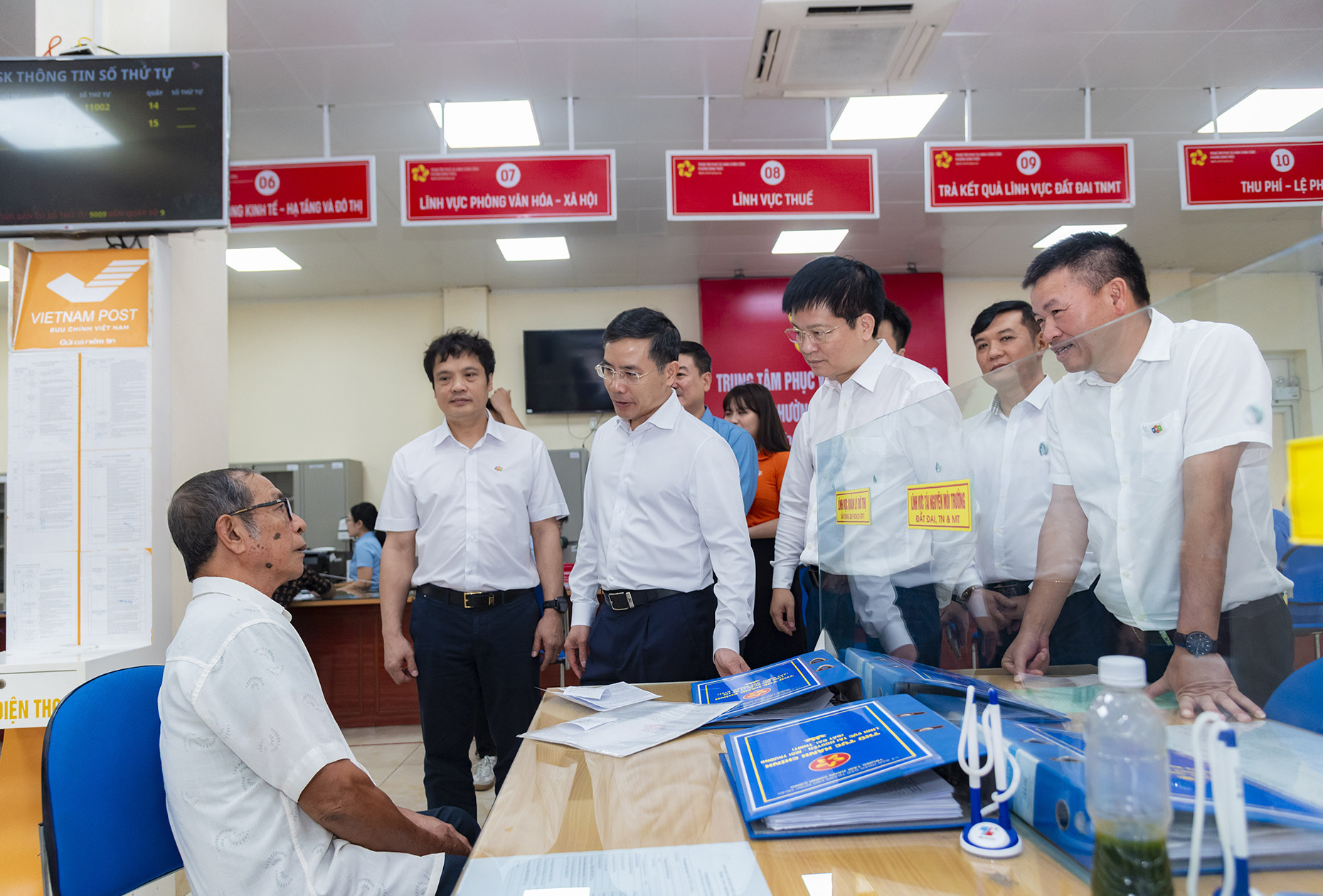Major Vietnamese tech firms including MobiFone, FPT, VNPT, and Viettel are intensifying efforts to assist local governments in operating digital administrative systems under the newly adopted two-tier local governance model.
MobiFone spearheads rollout across provinces

MobiFone staff assist provinces in launching the administrative service information system. Photo: PV
According to a MobiFone representative, starting July 1, the telecom company is officially launching the operation of its digital administrative information system in partnership with Public Administration Service Centers in various provinces and cities across the country. The initiative aligns with the two-tier governance structure, encompassing provincial and district-level coordination.
MobiFone previously played a role in implementing similar systems in Hanoi and Thai Nguyen provinces. The system is fully capable of supporting administrative processes at provincial, municipal, and ministerial levels in accordance with the new model.
The move comes amid a national push for more online public services, aiming to reduce in-person interactions, paperwork, human resources, and intermediary steps. MobiFone’s contributions are helping ensure the two-tier government system functions efficiently and in line with Resolution No. 57 by the Politburo, which emphasizes the advancement of science, technology, innovation, and digital transformation.
The system connects and synchronizes workflows between provincial and local levels, improving oversight, transparency, and administrative efficiency. By leveraging technology, local governments can conserve resources, reduce redundancy, and monitor progress in real time.
The comprehensive digitalization also enhances public service delivery, reflecting the role of digital governance in serving both citizens and businesses.

For citizens and businesses, the new model offers a transparent, user-friendly ecosystem that reduces time, costs, and procedural burdens. Through online platforms, users can submit documents, track progress in real time, and receive prompt results without physical visits.
This represents a significant step toward building a modern, efficient, and people-centric government.
FPT partners with Quang Ninh in digital reform
An FPT representative told VietNamNet that national administrative reform is part of a broader effort to “reshape the country,” reorganizing governance spaces and state mechanisms to build a modern, efficient, and streamlined public administration.
FPT has been a strategic partner in Quang Ninh Province – a national leader in administrative reform. Since 2013, the tech company has worked closely with the province’s Public Administration Service Center to design and implement a new model guided by the Government Office and inspired by Singapore’s modern governance.
On July 1, nearly 80 FPT technicians were stationed across 54 administrative units in Quang Ninh.
Together, they developed three key systems: a digital station with an integrated e-ID wallet for digitizing and submitting multi-channel public service applications; an online reception and queuing system for centralized tracking of service delivery and staff productivity; and a next-generation administrative information system that supports inter-provincial and inter-agency document processing, real-time updates, and results directly delivered to the e-ID wallet. This platform can also be used for broader digital economic and social transactions.
Nguyen Van Khoa, CEO of FPT, stated, “Today marks a historic milestone, ushering in a new phase in the reform of public administration, institutions, and political structures. Leveraging technology and digital transformation to partner with the Party, State, and Government in strengthening national governance and public service delivery is FPT’s top mission in this new era.”
Viettel deploys 5,000 staff to assist local implementation
The new model brings significant benefits. For the public and businesses, it provides a streamlined, modern, and transparent system that saves time, money, and effort.
For civil servants, it reduces manual workloads, boosts productivity, and enhances coordination and control via real-time data.
For provincial authorities, it offers a modern management tool to monitor administrative operations from top to bottom, enabling swift and accurate decision-making. It also paves the way for innovative governance solutions to support sustainable development and comprehensive digital transformation.
VNPT reported that it deployed at least two engineers per commune and ward to guide and support local officials during the service transition period, particularly when provincial portals were temporarily shut down to sync with the National Public Service Portal.
Thanks to this assistance, provinces such as Ho Chi Minh City, Ninh Binh, Son La, and Dien Bien met deadlines ahead of schedule, ensuring a smooth transition with “no disruption and no backlog” as the new administrative boundaries came into effect on June 30.
Viettel stated that within just five days, nearly 5,000 of its personnel had been deployed to help commune and ward-level governments adopt digital systems and ensure full connectivity before the two-tier government model went live.
Thai Khang